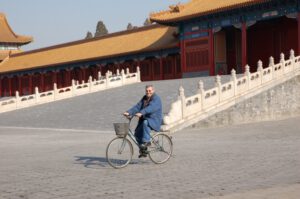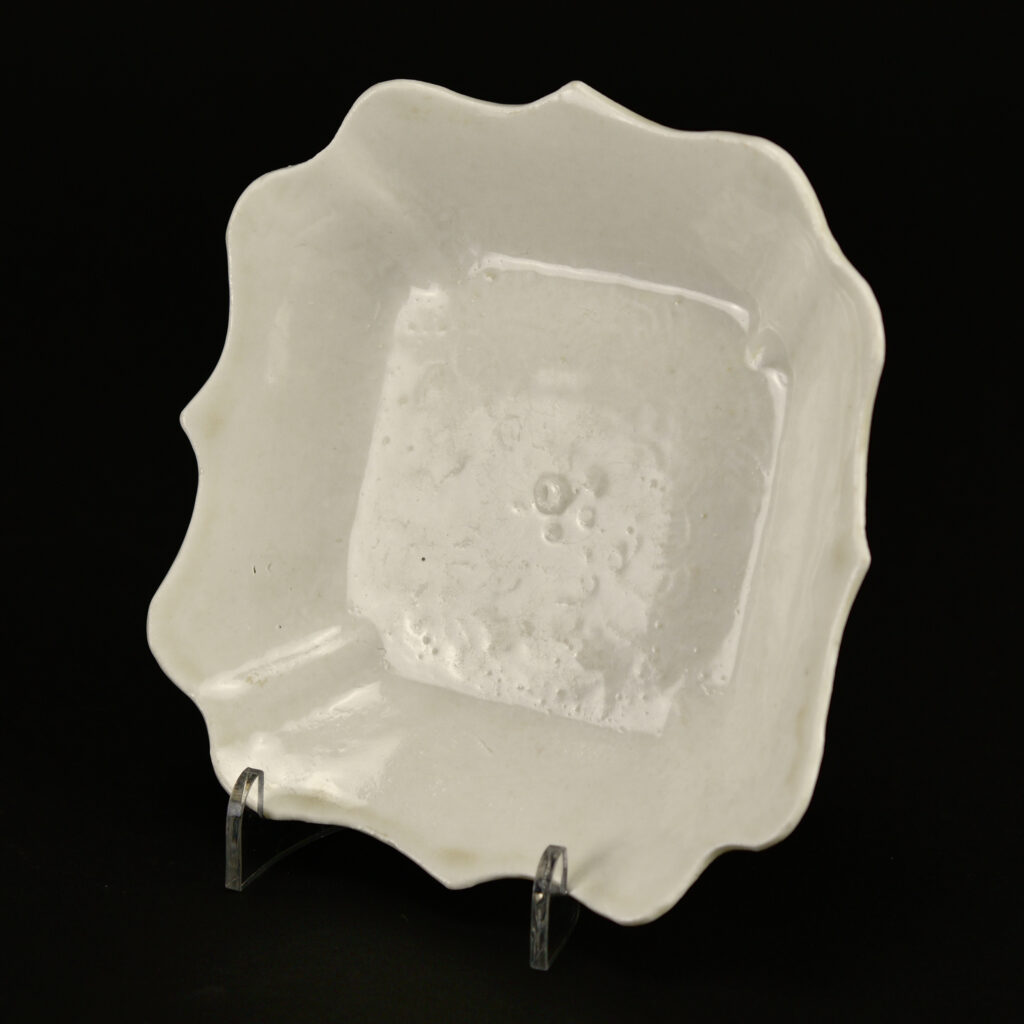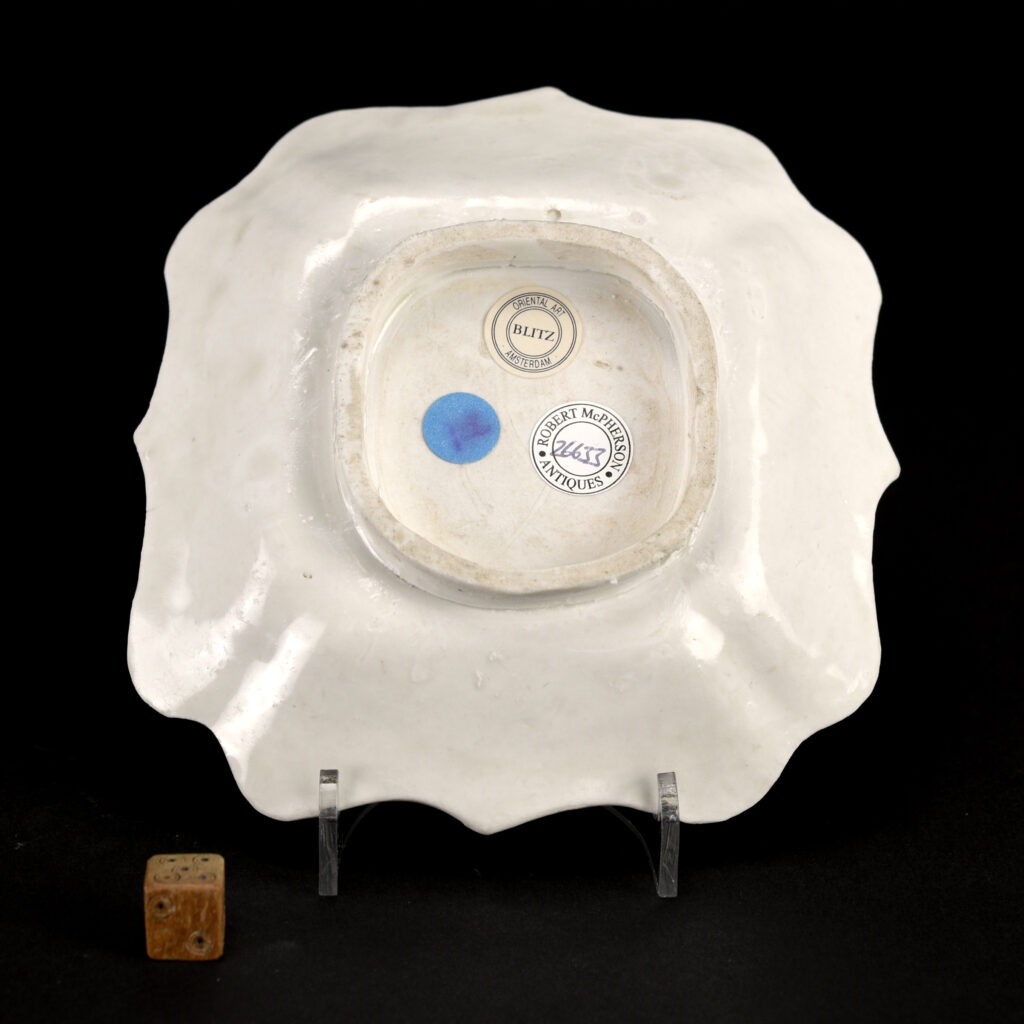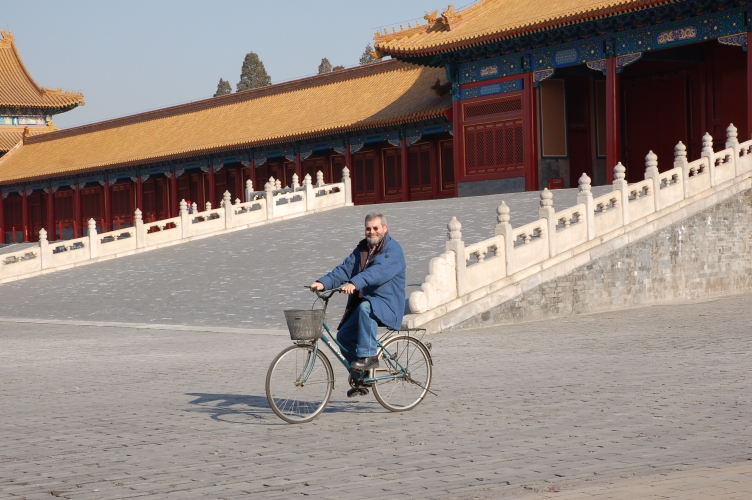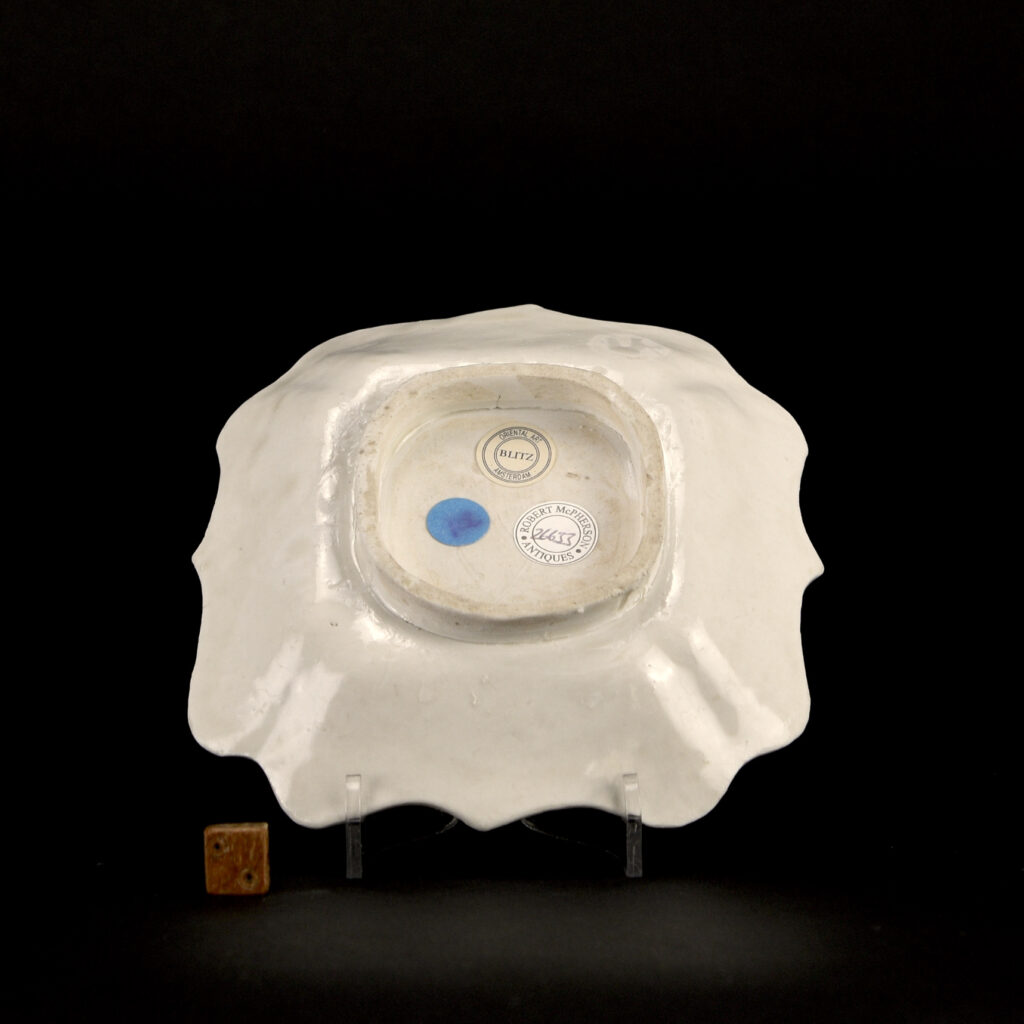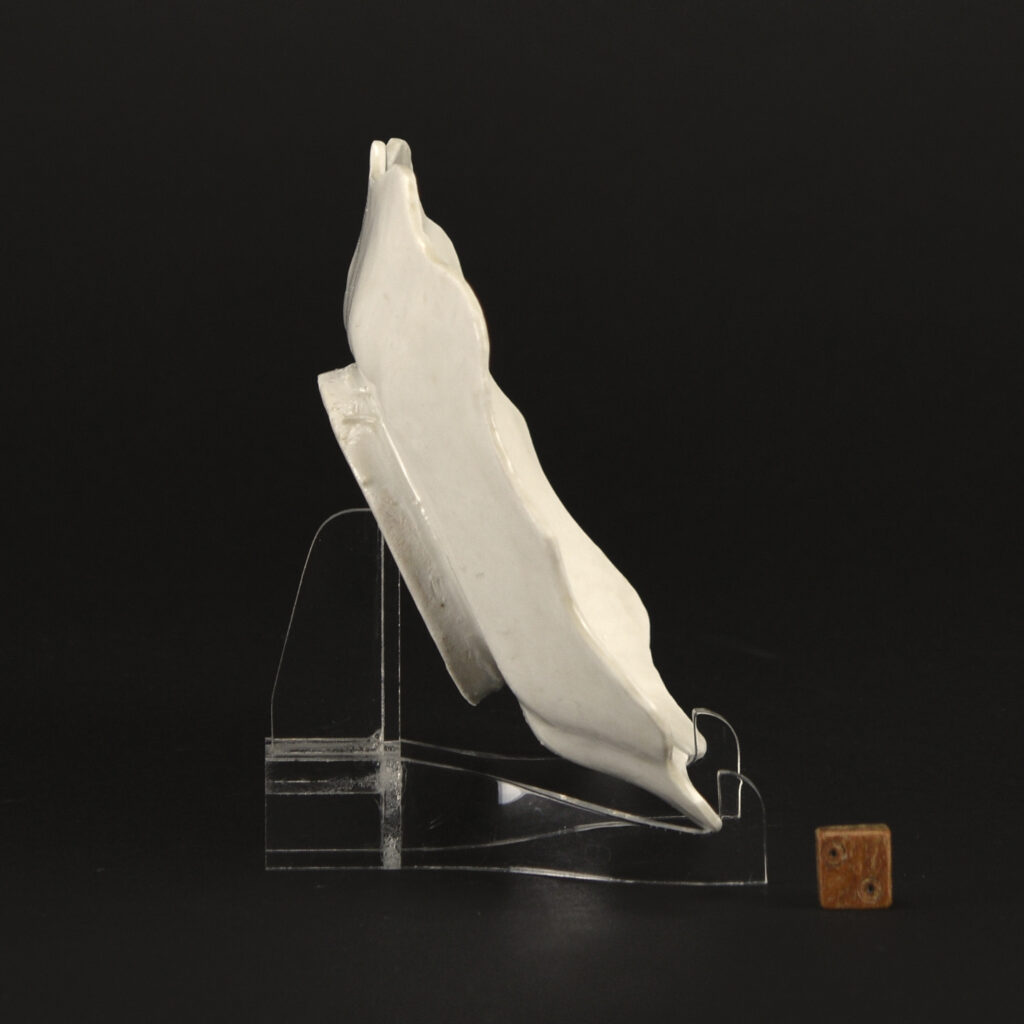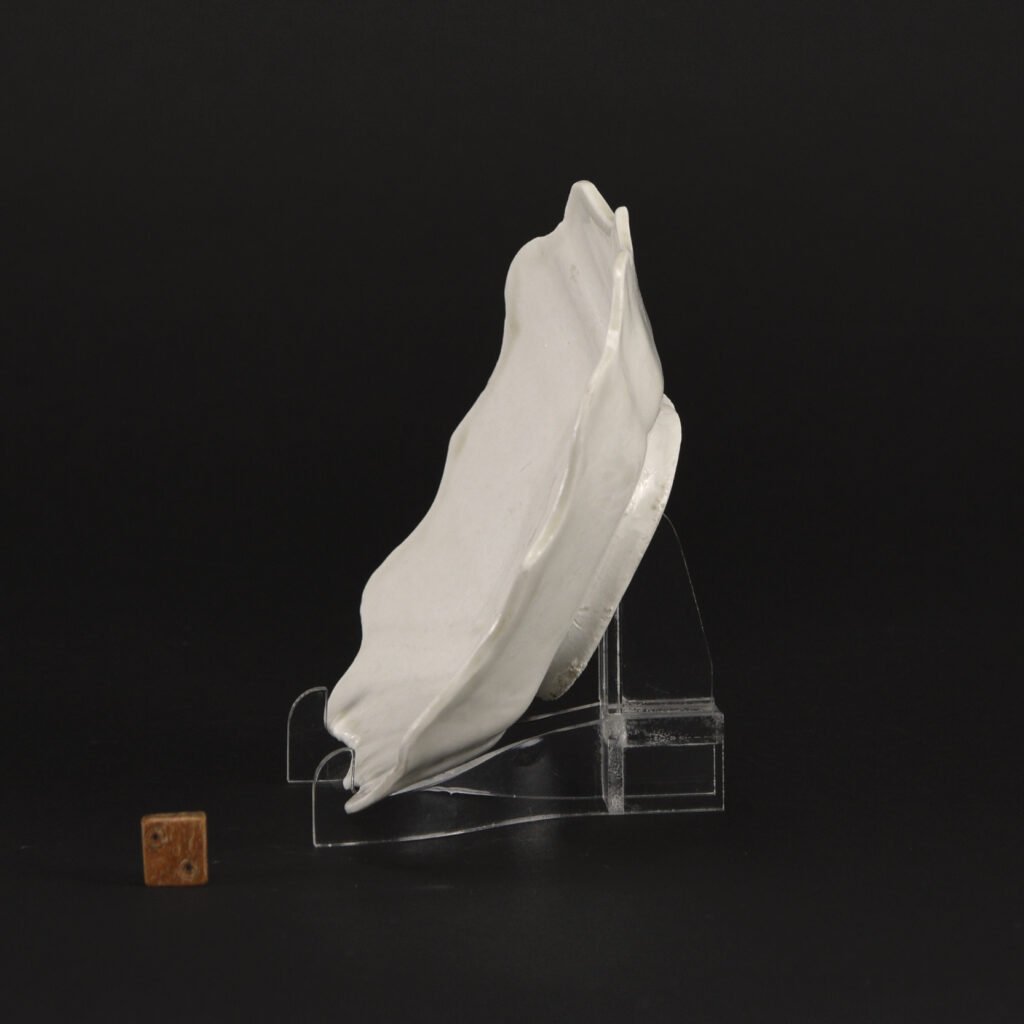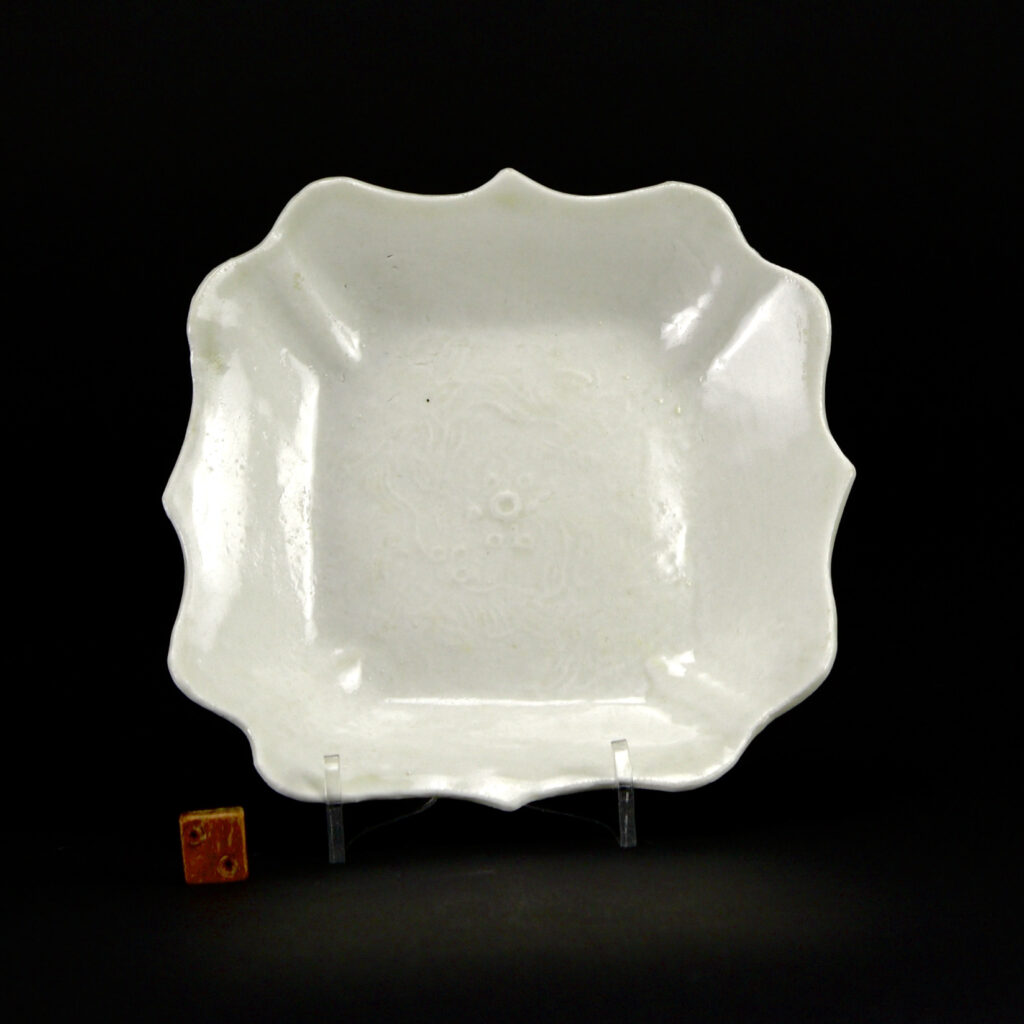
A Fine Liao White Porcelain Dish
A Fine Liao Moulded Porcelain Dish, Xingyao Kilns, North East China, late 10th or early 11th Century. This light Xingyao porcelain dish has been moulded over a hump mould, the decoration in the center is of two birds in flight. The foot has been crudely applied and not very carefully finished, there tool marks scratched around and on the foot, as well fingernail marks, the back of the dish has a fingerprint. These personal imprints of a moment in time have survived intact over a thousand years, something that never fails to give me goosebumps. This thinly moulded dish is in one of the best known Liao forms, it exists in various material including metal, Sancai lead-glazed pottery as well as Xing ware. However, the porcelain versions are far less common than the Liao sancai pottery dishes. Xing ware, or as it is now described Xingyao is the first porcelain produced in China, therefore the world. The name and type may not be familiar to many, but it is one of most import types of ceramic simply because it is the world’s first porcelain.
SOLD
- Condition
- In excellent condition, very minor wear. A small burst bubble near the footrim.
- Size
- Diameter 14.4 cm (5 3/4 inches).
- Provenance
- Blitz Art Amsterdam, label to base, see the photograph of a Dutchman on a bicycle in the 'Photograph Gallery'. An private American collection.
- Stock number
- 26633
Information
The Liao Dynasty:
The Liao dynasty also known as the Liao Empire (officially the Great Liao), or the Khitan Empire was an empire in East Asia that ruled from 907 to 1125 over present-day Mongolia and portions of the Russian Far East, northern Korea, and northern China. The empire was founded by Abaoji, Khagan of the Khitan people around the time of the collapse of Tang China and was the first state to control all of Manchuria.
Almost immediately after its founding, the Khitan Empire began a process of territorial expansion, with Abaoji leading a successful conquest of Balhae. Later emperors would gain the Sixteen Prefectures by fueling a proxy war that led to the collapse of the Later Tang (923–936) and would establish tributary relationships with Goryeo and Song China after failing to conquer Goryeo.
Tension between traditional Khitan social and political practices and Chinese influence and customs was a defining feature of the dynasty. This tension led to a series of succession crises; Liao emperors favored the Chinese concept of primogeniture, while much of the rest of the Khitan elite supported the traditional method of succession by the strongest candidate. So different were Khitan and Chinese practices that Abaoji set up two parallel governments. The Northern Administration governed Khitan areas following traditional Khitan practices, while the Southern Administration governed areas with large non-Khitan populations, adopting traditional Chinese governmental practices.
Differences between Chinese and Khitan society included gender roles and marital practices: the Khitans took a more egalitarian view towards gender, in sharp contrast to Chinese cultural practices that segregated men’s and women’s roles. Khitan women were taught to hunt, managed family property, and held military posts. Many marriages were not arranged, women were not required to be virgins at their first marriage, and women had the right to divorce and remarry.
The Liao dynasty was destroyed by the Jurchen people of the Jin dynasty in 1125 with the capture of Emperor Tianzuo of Liao. However, the remnant Khitan, led by Yelü Dashi, established the Qara Khitai (Western Liao dynasty), which ruled over parts of Central Asia for almost a century before being conquered by the Mongols. Although cultural achievements associated with the Liao dynasty are considerable, and a number of various statuary and other artifacts exist in museums and other collections, major questions remain over the exact nature and extent of the influence of the Liao Khitan culture upon subsequent developments, such as the musical and theatrical arts.
information source: Wikipedia.
Provenance : Blitz Oriental Art
Since then Dries and Diana Blitz, later with Willemijn Murray, have sold many fine objects to collectors and museums worldwide.
While they are renowned for their early Chinese ceramics and works of art they usually also stock fine pieces from later periods and from other Asian cultures.
